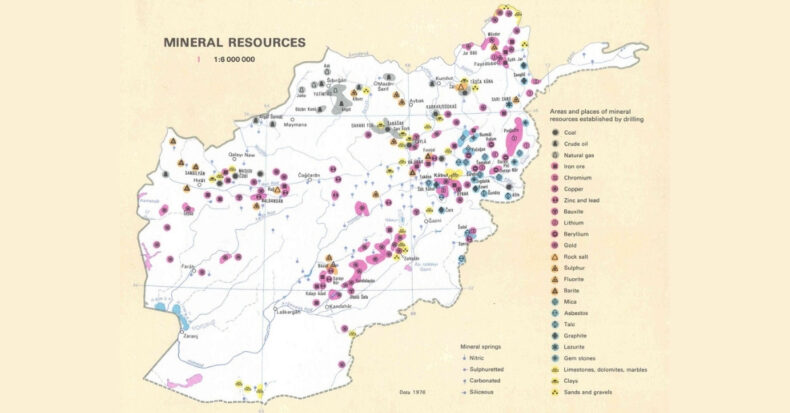As soon as the United States decided to withdraw assistance, Afghanistan was bound to face numerous issues. When the Taliban troops invaded Afghanistan once again, many questions were left unanswered.
What lies in the destiny of Afghanistan and the people? Will history repeat itself? Will the United States intervene, and are the Taliban troops implementing a different approach this time?
Since international aid is not available, will Afghanistan be relying on its mineral resources? If so, how or will they extract their mineral resources if they have less capital and technological equipment?
Among the many questions mentioned, this article will be emphasizing the mineral resources that Afghanistan has.
Perhaps the positive or the silver lining of Afghanistan is their possession of natural resources.
Detailed Survey of Natural resources in Afghanistan
Afghanistan has access to a large number of nonfuel minerals that is estimated to have a value of more than US$1 Trillion. The country is known for its precious gemstones such as Rubies, Emeralds, Tourmalines, and Lapis Lazuli.
Extraction of these gemstones takes place in small artisanal mines done by legal as well as illegal means.
Not only gemstones, but the country is also rich with iron, copper, lithium, rare earth elements, cobalt, bauxite, mercury, uranium and chromium, which have comparatively more excellent value.
Afghanistan is fortunate to have an abundance of minerals; however, the scientific understanding of these resources is currently at the exploratory stage.
Geologists have provided studies that state that a minimum of seven to ten years would be required to obtain these minerals as a new source of revenue.
This observational survey concludes that the extraction of minerals will not be able to accelerate the economy of the country at a faster pace anytime soon.
Geological Survey of the Country and its Mineral Resources over the Years
During the 1960s – 1970s, the Soviets gave a detailed analysis regarding the resources that were accessible in Afghanistan.
The Soviet scientists dedicated their efforts to a large-scale analysis by providing detailed field mapping and massive sampling with borehole drilling and lab analysis.
The Geological Survey of the United States conducted a detailed review which identified the availability of mineral sites and the richness and the availability of the minerals.
Due to Afghanistan’s rich mineral resources, China and India have shown strong interest since 2010.
Information on the Mineral Resources Available
According to the USGS estimation: The total amount of copper resources and deposits sum up to about 57.7 million metric tons. Currently, its resource value is $516 billion.
It is also evident that there are various undiscovered resources are yet to be explored and analyzed. If the total minerals can be accessible, Afghanistan would hold the top five nations for copper reserves in the world globally.
Extraction and exploration of these resources would involve capital to ensure good roads, railways, transportation facilities, electricity and equipment.
The situation for Afghanistan is comparatively more challenging due to its rugged terrain and its landlocked nature, making it tough to transport raw materials and ores to foreign markets.
Mining of these resources can lead to severe impact on the quality of land and air along with watersheds which are of great importance as it ensures storage and accessibility of water.
The available resources will provide long-term foreign investment and skill-building and infrastructure expansion essential to achieving a sustainable economy.
With all the current situation, questions arise as to what would happen if the Taliban troops achieve complete control over Afghanistan.
Will the mineral resources be recovered? If so, how would these resources be utilized? Will a superpower or some other country intervene this time to extract mineral resources for their benefit?













